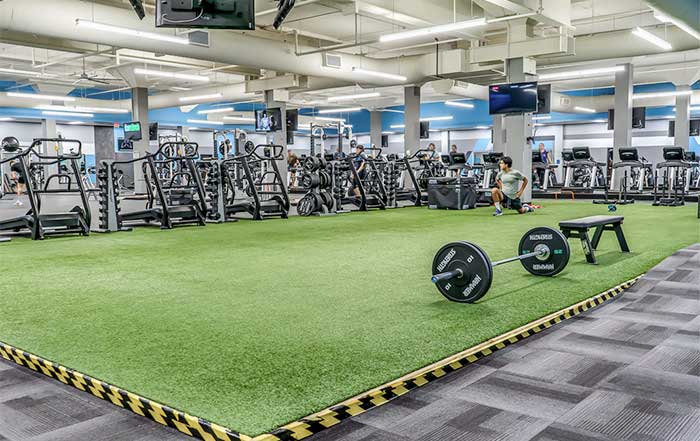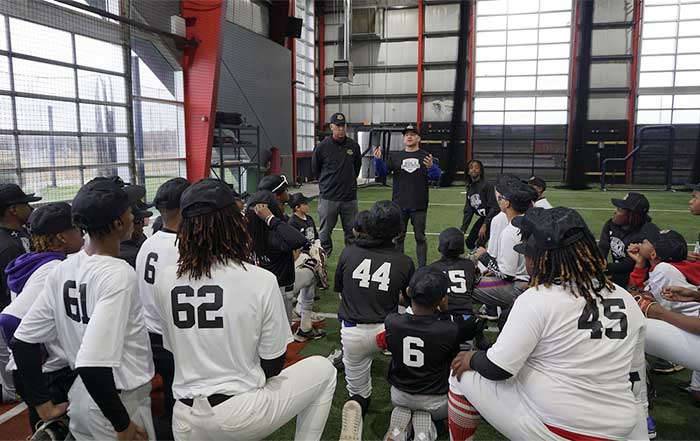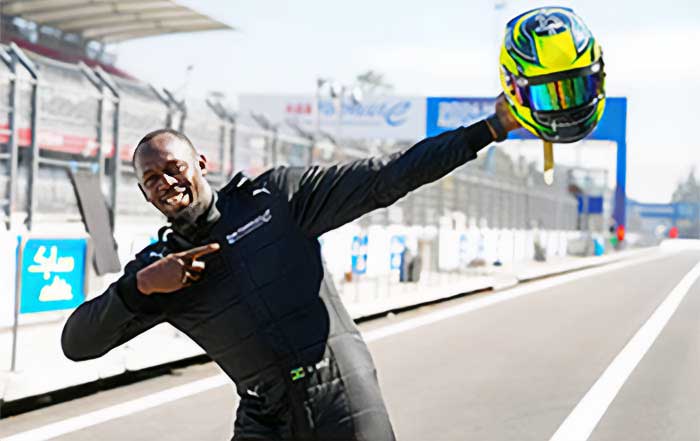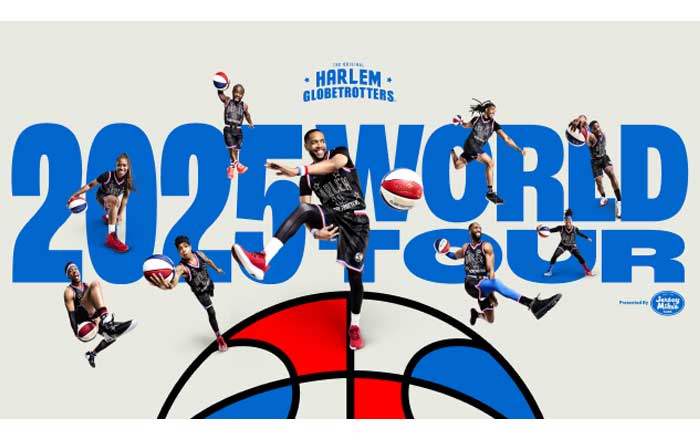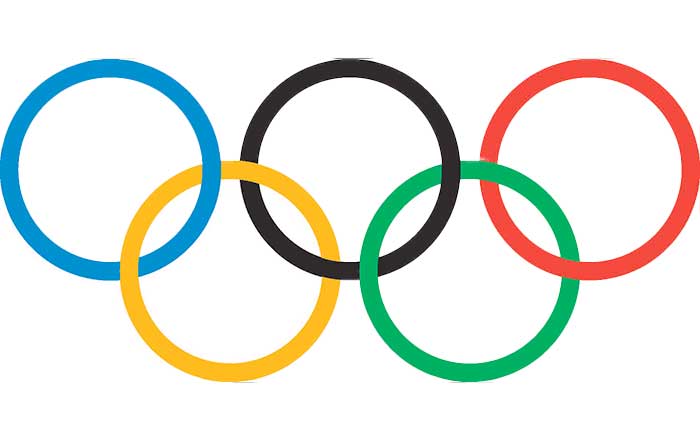The global athletic and sport market today reflects a dynamic intersection of tradition, innovation, and commercial expansion and sports are no longer confined to arenas, stadiums, or gymnasiums—they have evolved into an interconnected ecosystem that touches industries such as media, technology, healthcare, fashion, and even climate-conscious business practices. For audiences around the world, the athletic sector has become a barometer of cultural identity, national pride, and economic opportunity.
This article explores the current statistics shaping the athletic and sport market, analyzes the transformative events influencing its trajectory, and highlights the role of key organizations, companies, and technologies that continue to redefine the global sporting landscape. For readers of sportyfusion.com, the coverage connects global perspectives with practical insights, offering a lens into how fitness, performance, culture, and business are converging in the sporting world today.
The Global Sports Economy in 2025
The sports economy has become a trillion-dollar force, surpassing forecasts made at the start of the decade. According to industry data, the global sports market size is estimated to exceed $1.1 trillion by 2025, reflecting a compound annual growth rate (CAGR) of nearly 6% since 2020. The expansion is driven by rising consumer spending on sports events, apparel, digital streaming, and fitness services.
Sports broadcasting remains the cornerstone of the industry, with streaming platforms overtaking traditional television as the primary distribution channel. Major rights deals such as the NFL’s agreements with Amazon Prime Video, Apple’s partnerships with Major League Baseball, and Disney’s ESPN+ dominance in multi-sport packages have redefined how fans engage with content. Learn more about the business of global broadcasting.
At the same time, revenue from fitness technology, wearable devices, and health-focused applications is skyrocketing. This segment alone is projected to generate more than $150 billion globally by 2025, reflecting the deep integration of sports performance with health and lifestyle goals.
Regional Market Insights
United States
The United States continues to dominate the sports economy, contributing nearly 35% of the global market share. The popularity of American football, basketball, and baseball remains unmatched, while emerging areas such as esports and women’s sports leagues are carving out significant revenue streams. Nike, Adidas, and Under Armour compete aggressively for market share in apparel and footwear, while companies like Peloton and WHOOP push forward the fitness technology revolution.
Sports betting, legalized across numerous states since 2018, has become a multi-billion-dollar industry, adding new layers of engagement to fan experiences. Platforms like DraftKings and FanDuel illustrate how digital business innovation is reshaping the economic model for sports organizations.
Europe
Europe remains the epicenter of global football, with the English Premier League, La Liga, and Bundesliga acting as cultural and financial powerhouses. The combined value of European football clubs is estimated to exceed $40 billion, and transfer fees for top athletes continue to break records. In addition, hosting mega-events such as the 2024 UEFA European Championship in Germany showcased Europe’s ability to balance tradition with innovation in fan engagement.
Sports technology startups in Germany, Spain, and the Netherlands are driving performance analytics and coaching solutions. Readers interested in performance-focused insights can explore training and performance trends.
Asia-Pacific
The Asia-Pacific region is the fastest-growing sports market, with China, India, Japan, and South Korea leading the charge. China has invested billions into football academies and infrastructure in hopes of becoming a global force in the sport, while India’s cricket ecosystem, particularly the Indian Premier League (IPL), generates revenues rivaling global football leagues.
Japan and South Korea remain innovators in sports technology, contributing to the growth of advanced wearables, gaming, and virtual experiences. Learn more about technology-driven sports innovations.
Africa and Latin America
Africa’s sports market is expanding rapidly, supported by youth demographics and grassroots initiatives. Football remains the continent’s unifying force, with talent pipelines supplying elite athletes to European leagues. The rise of African-hosted events, such as the African Cup of Nations, underscores the region’s growing influence.
Latin America’s passion for football remains unmatched, with Brazil and Argentina producing global icons while also exploring business opportunities in sports media and esports.
Key Trends Shaping the Market
Rise of Women’s Sports
Women’s sports are finally receiving the recognition they deserve. Sponsorship, media coverage, and fan engagement have all surged. The Women’s World Cup 2023 was a turning point, drawing record audiences and securing multi-million-dollar sponsorships from global brands such as Visa, Coca-Cola, and Nike. By 2025, women’s leagues in football, basketball, and cricket are expanding into new territories and are backed by sustainable investment models.
Fitness and Health Integration
The boundaries between sports, fitness, and health have blurred significantly. Athletes and enthusiasts alike now see physical activity as part of a holistic wellness lifestyle. The global fitness market, valued at over $100 billion, intersects directly with fitness trends in gyms, digital platforms, and outdoor training. The increased adoption of smart health devices and biofeedback tools demonstrates how science and technology are optimizing performance at every level.
Digital Transformation and Esports
The growth of esports continues to rival traditional sports, with revenue in 2025 expected to reach $3.5 billion worldwide. Events hosted by Riot Games, Activision Blizzard, and Tencent attract stadium-sized crowds and streaming audiences in the millions. At the same time, traditional sports organizations are investing in gaming divisions, recognizing the overlap in fan bases and commercial opportunities. Explore more on the role of gaming in modern sports culture.
Environmental and Ethical Considerations
The environmental footprint of sports has come under intense scrutiny. Mega-events demand massive energy consumption, air travel, and resource use. In response, organizations such as the International Olympic Committee (IOC) and FIFA have launched sustainability initiatives to reduce carbon emissions and promote green stadiums. Fans increasingly demand accountability, connecting sports culture to broader environmental concerns.
OverviewRegionsSegments
Total Market Value
$1.1+ Trillion
6% annual growth since 2020, driven by streaming, fitness tech, and global expansion
Broadcasting & Media
$250B
Largest segment - streaming platforms overtaking traditional TV
Apparel & Footwear
$200B+
Nike, Adidas, Puma leading with sustainability focus
Fitness Technology
$150B
Wearables and health apps bridging sports and wellness
Sports Betting & Gaming
$90B
Rapid growth from legalization and digital platforms
Esports Revenue
$3.5B
Exponential growth rivaling traditional sports engagement
North America
$400B+ (35% share)
NFL, NBA, MLB dominance • Sports betting revolution • Fitness tech innovation
Europe
$300B (27% share)
Football powerhouse • Formula 1 expansion • Premier League broadcasting
Asia-Pacific
$250B (23% share)
Fastest growing • Cricket IPL • China football investment • Esports leadership
Latin America
$30B (3% share)
Football culture • Brazil & Argentina talent exports • Growing media opportunities
Africa
$15B (1% share)
Youth demographics • Talent pipeline • Grassroots development • Emerging potential
Major Global Sporting Events in 2025
Paris 2024 Olympics Legacy
The Paris 2024 Olympic Games left behind a legacy of sustainability and innovation. From the use of renewable energy to eco-friendly venues, the Games set a new benchmark for how mega-events can contribute positively to local communities. The momentum continues into 2025 as the city capitalizes on infrastructure investments and enhanced international reputation.
FIFA World Cup 2026 Build-Up
Preparations for the FIFA World Cup 2026, to be jointly hosted by the United States, Canada, and Mexico, dominate the global sports agenda. This will be the largest World Cup in history, with 48 participating nations. Cities across North America are already experiencing an economic boom in construction, hospitality, and sponsorship deals, showcasing the impact of sports on global business and jobs.
Other Key Events
Formula 1 continues its global expansion, with races in Saudi Arabia, Miami, and Las Vegas highlighting motorsport’s commercial appeal.
NBA Global Games in Europe and Asia underline basketball’s international growth strategy.
Tour de France Femmes, revived in 2022, has become one of the premier women’s cycling events worldwide.
The Role of Brands and Sponsorship
Sponsorships remain the lifeblood of sports financing. Global brands from diverse industries—from Coca-Cola and PepsiCo to Adidas, Nike, and Puma—compete for visibility. Technology companies such as Google, Apple, and Samsung are also emerging as key partners, linking innovation with sports culture. Readers can explore more insights into brand partnerships that define the modern sports market.
At the same time, ethical concerns about sponsorship sources, such as gambling and fossil fuel companies, are pushing fans and governing bodies to rethink long-term sustainability in sponsorship strategies.
The athletic and sport market in 2025 is a vivid reflection of global society—dynamic, complex, and deeply interconnected. From the surge of women’s sports to the rise of esports, from the integration of health and fitness technologies to the environmental considerations of mega-events, the landscape is evolving at a pace that demands attention and adaptation.
For readers of sportyfusion.com, the lesson is clear: sports are no longer a separate category of entertainment but a comprehensive driver of cultural identity, technological progress, and economic growth. As the world prepares for future milestones such as the FIFA World Cup 2026 and the Los Angeles Olympics in 2028, the role of athletes, organizations, and fans will only become more central to shaping the narrative of global society.
Extended Market Statistics
The numbers behind the global athletic and sport market in 2025 reveal an industry that is expanding rapidly and reshaping itself in ways few anticipated a decade ago. While the overall valuation of more than 1.1 trillion dollars captures the scale, it is the deeper examination of segments and regions that provides real insight into its trajectory. Sports media and broadcasting remain the largest driver of revenue, generating more than 250 billion dollars annually. The transition from traditional television to streaming has accelerated, with services such as ESPN+, DAZN, and Amazon Prime Sports creating intense competition. The subscription-based model has become the dominant way fans engage with sports content, and the quest for exclusive rights is pushing companies to invest billions in securing long-term deals.
The apparel and footwear sector continues to thrive, surpassing 200 billion dollars in global revenue. Brands such as Nike, Adidas, and Puma still dominate the market, yet challenger brands like Lululemon and On Running are reshaping consumer expectations. These companies have carved out strong positions by merging fashion with function, emphasizing sustainability, and appealing to younger demographics who want their athletic gear to be a lifestyle statement as much as a performance tool.
Fitness technology has become another defining force in the market. Valued at 150 billion dollars, this segment includes wearables and digital applications that connect directly with personal health goals. Devices such as the Apple Watch, Garmin trackers, and performance-focused wearables from WHOOP and Oura are no longer niche products but essential accessories for athletes, trainers, and everyday consumers alike. The integration of biofeedback and recovery analytics into mainstream fitness has created a bridge between sports performance and healthcare, making physical activity a data-driven pursuit.
Meanwhile, the rise of sports betting and gaming has added a new layer of economic influence. Online sports betting is expected to generate close to 90 billion dollars globally in 2025, boosted by the legalization of gambling across multiple U.S. states and the rapid digitalization of the market. Companies such as DraftKings, Bet365, and FanDuel have become household names, shaping how fans consume live sports by turning every match into an interactive experience. Esports, another fast-growing field, is projected to contribute more than 3.5 billion dollars in annual revenues, placing it alongside traditional sports in terms of global engagement. Major developers and tournament organizers such as Riot Games, Activision Blizzard, and Tencent are now competing with long-established sporting organizations for audiences and sponsorship deals.
From a regional perspective, North America remains the largest contributor, generating more than one-third of the global total, largely due to the immense popularity of the NFL, NBA, and Major League Baseball. Europe follows closely with around 300 billion dollars in annual sports revenues, dominated by football and Formula 1. The Asia-Pacific region has become the fastest-growing sports market, now valued at 250 billion dollars, propelled by India’s cricket ecosystem, China’s investment in football, and the technological integration of Japan and South Korea. Latin America continues to be defined by football’s cultural dominance, with Brazil and Argentina contributing heavily to the region’s estimated 30 billion dollar sports economy. Africa, though smaller in scale with a 15 billion dollar valuation, represents a market of enormous potential, fueled by its youthful demographics and the continuous export of talent to elite global leagues.
For additional perspectives on how these performance-driven numbers connect with training and physical culture, readers can explore global performance insights.
Case Studies of Key Companies
Few companies illustrate the power of branding and strategy in sports as well as Nike. With revenues exceeding 55 billion dollars in 2025, Nike has retained its crown as the industry leader by positioning itself as more than just a sportswear company. It has built a brand that stands for lifestyle, aspiration, and innovation. From carbon-neutral manufacturing processes to recycled materials in its product lines, Nike has embedded sustainability into its long-term strategy. The company’s sponsorship deals with leading athletes across basketball, athletics, and football reinforce its global dominance, while digital platforms such as the Nike Training Club app ensure that consumers engage with the brand well beyond purchasing apparel. Nike’s ability to fuse performance with culture explains its longevity at the top.
Adidas remains its fiercest challenger, with revenues climbing above 30 billion dollars in 2025. Adidas has strategically invested in women’s sports, sustainability, and collaborations with global icons to maintain cultural relevance. Its ties to European football through partnerships with clubs and national teams guarantee unmatched visibility, while its innovations in recyclable footwear demonstrate how technological progress can align with consumer demand for environmentally responsible products. Adidas has successfully maintained an identity rooted in performance while embracing the lifestyle crossover that younger audiences demand.
Alongside these giants, challenger brands like Lululemon and On Running have become disruptors. Lululemon, once a niche yoga brand, has expanded into mainstream athletic apparel, surpassing 10 billion dollars in annual revenue by appealing to consumers who blend wellness, fashion, and fitness. On Running, originating in Switzerland, has gained international traction by focusing on performance-oriented footwear and harnessing celebrity endorsements. Both brands resonate with consumers who seek authenticity and innovation over legacy status.
The technological dimension of the market is exemplified by Peloton and WHOOP. Peloton, after navigating difficulties in the early 2020s, reinvented itself as a hybrid fitness service, combining premium equipment with subscription-based content and digital community engagement. WHOOP has become the wearable of choice for elite athletes and health-conscious consumers, providing detailed recovery and performance metrics that integrate seamlessly into daily training. These companies represent the future of sports where health, fitness, and technology are inseparable. Readers can learn more about how such technologies are shaping global health trends.
Country-Specific Highlights
The United Kingdom continues to play a central role in global sports culture. The Premier League stands as the most valuable football league in the world, generating billions annually through broadcasting and sponsorship deals. British athletes excel in cycling, athletics, and tennis, reinforcing the country’s sporting identity. The UK is also home to some of the world’s largest sports betting operators, including Bet365, which contributes significantly to both domestic and international markets.
Germany has emerged as a leader in sports innovation. Beyond its footballing strength and the successful hosting of the UEFA Euro 2024, the country is fostering a thriving ecosystem of sports technology startups. These companies focus on advanced analytics, fan engagement platforms, and virtual training environments, strengthening Germany’s reputation as a hub of efficiency and engineering in the sporting arena.
Canada is increasingly visible on the global sports stage. Traditionally defined by ice hockey, the country is now expanding its presence in football, basketball, and athletics. The Toronto Raptors and Canada’s Olympic athletes provide international recognition, while the nation is investing heavily in research related to sports science and performance optimization.
Australia’s vibrant sports culture continues to capture global attention. Cricket, rugby, and swimming remain dominant, but the country is also emerging as a strong player in esports and digital fan engagement. Hosting international events, from the Australian Open to Formula 1 Grand Prix races, provides both economic and cultural capital while cementing Australia’s role as a sporting powerhouse.
Emerging markets such as Singapore, South Korea, and Brazil are also shaping the global picture. South Korea’s dominance in esports highlights how cultural identity intersects with business strategy, while Brazil’s football culture continues to define its global influence. Readers can discover more about these cultural dynamics in global sports culture.
Deeper Analysis of Sports Events
Formula 1 has become one of the fastest-growing global sports properties. Its expansion into new circuits such as Saudi Arabia, Miami, and Las Vegas demonstrates the sport’s ambition to reach beyond its European roots. The immense popularity of Netflix’s “Drive to Survive” series has turned drivers into household names and expanded the sport’s fan base among younger generations. Sponsorship deals with companies like Aramco, Red Bull, and Mercedes-Benz reveal the high commercial stakes of motorsport.
The NBA has adopted a truly global strategy, extending its influence far beyond North America. Regular-season games in Paris, Abu Dhabi, and Tokyo show how the league has positioned itself as a cultural export. Its ongoing partnership with Tencent ensures continued access to the massive Chinese market, while the Basketball Africa League represents its commitment to developing grassroots talent in new regions. The NBA’s approach reflects a model where inclusivity and technological innovation are central to maintaining relevance worldwide.
Cycling, particularly through the Tour de France Femmes, is another example of sport entering a new era. Since its reestablishment in 2022, the women’s race has grown in prestige and is now broadcast globally, securing high-profile sponsorships and bringing more attention to women’s cycling. Beyond competitive racing, cycling is also growing as part of urban mobility trends in Europe and North America, where bicycles are increasingly viewed as sustainable alternatives for commuting.
Sports and the Environment
In 2025, environmental awareness is no longer a marginal consideration in the sports industry; it has become a central concern for organizers, sponsors, and fans alike. Mega-events such as the Olympic Games, FIFA World Cup, and Formula 1 Grand Prix face increasing scrutiny over their carbon footprints. The massive energy consumption, international travel, and construction projects that come with these spectacles demand accountability in a world where climate change is at the forefront of public discourse.
Sports governing bodies have begun to respond. The International Olympic Committee (IOC) has pledged to host climate-positive Games by 2030, while FIFA is investing in carbon offset projects and renewable energy programs for the 2026 World Cup. Formula 1 has also committed to achieving net-zero carbon emissions by 2030, a target supported by investments in biofuels and hybrid technologies. Fans and advocacy groups, however, continue to press for stronger and more immediate action, insisting that environmental commitments must translate into measurable results rather than symbolic gestures.
At the local level, stadiums and arenas are increasingly designed with green principles in mind. From solar-powered facilities in Europe to water-recycling stadiums in Australia, the infrastructure of sport is undergoing a quiet revolution. These efforts align with broader shifts in consumer expectations, as audiences increasingly favor brands and events that demonstrate genuine commitments to sustainability. For readers interested in how these themes intersect with broader cultural values, environmental insights provide a useful perspective.
Ethical Sponsorship and Corporate Responsibility
While sponsorship remains the lifeblood of global sport, ethical considerations around who funds events and athletes have become a subject of intense debate. Partnerships with gambling companies, alcohol brands, and fossil fuel corporations raise questions about the social responsibilities of sports organizations. Younger audiences, in particular, express a strong preference for partnerships with companies that prioritize sustainability, diversity, and ethical business practices.
Some organizations have already begun making adjustments. Several football clubs in Europe have phased out gambling logos from children’s merchandise, and governing bodies such as UEFA and FIFA have explored guidelines that balance financial viability with social responsibility. Likewise, athletes themselves have started rejecting certain sponsorships, recognizing that their personal brands are intertwined with the causes they endorse.
Technology companies, health brands, and renewable energy firms are increasingly stepping into the sponsorship space. Companies like Apple, Google, and Tesla now appear in arenas and tournaments once dominated by alcohol or tobacco sponsors. This shift not only reflects economic change but also signals a cultural realignment of what fans and athletes deem acceptable. For more discussion of the role of corporate partnerships in sport, readers can explore brand dynamics.
Job Creation and Economic Impact
The athletic and sports industry remains one of the most powerful engines of job creation worldwide. In 2025, it is estimated that more than 40 million people are directly or indirectly employed in the sector. These roles extend far beyond athletes and coaches to include sports science specialists, broadcasters, marketing professionals, logistics coordinators, and technology developers.
Mega-events provide particularly sharp examples of job generation. The upcoming FIFA World Cup 2026 across the United States, Canada, and Mexico is already spurring thousands of jobs in construction, hospitality, event management, and transportation. Similarly, the Los Angeles Olympics in 2028 is expected to create long-term employment opportunities in infrastructure, sustainability projects, and media production.
The digital transformation of sports has also created entirely new job categories. Careers in esports management, virtual fan engagement, and performance analytics did not exist two decades ago, yet today they represent fast-growing employment fields. Sports journalism, content creation, and data-driven storytelling continue to evolve, demanding professionals with both technical skills and cultural awareness. Readers interested in employment prospects can find more detail in global sports jobs.
Moreover, grassroots sports programs in developing regions have become engines of both economic and social mobility. By providing pathways from local academies to global clubs, they generate not only player careers but also secondary jobs in coaching, physiotherapy, and administration. Sports tourism—another growing subsector—adds to this impact, drawing international visitors to destinations with marquee events.
The Cultural Dimension of Sport
Sports continue to serve as a reflection of global culture in 2025, and their impact extends beyond competition and revenue. They act as symbols of national pride, social progress, and identity formation. The Women’s World Cup in 2023 highlighted the empowerment of female athletes, not just in terms of commercial value but also in terms of representation and cultural influence. The sustained rise of women’s leagues in football, basketball, and cricket confirms that gender equity in sport is finally becoming a reality rather than an aspiration.
Esports and gaming have bridged generational gaps, appealing to younger audiences while attracting investments from traditional sports institutions. This has created a hybrid cultural landscape where football clubs sponsor esports teams, and digital competitions draw audiences that rival those of live matches. Readers seeking deeper cultural context can explore sports and society.
The intersection of sport and politics remains equally pronounced. Nations continue to use sporting success as a means of soft power, hosting events to showcase economic strength and cultural influence. This is evident in the investments made by Middle Eastern countries in football, tennis, and golf, where strategic partnerships and global tournaments double as diplomatic tools.
Long-Term Global Outlook
Looking ahead, the athletic and sport market is poised for further transformation. Technological integration will continue to reshape performance, fan engagement, and health. Artificial intelligence will enhance athlete monitoring, predictive analytics, and injury prevention, while virtual reality platforms will bring immersive experiences to fans worldwide. The line between live sport and digital interaction will blur further, creating a hybrid model of engagement. Readers can dive deeper into these innovations in sports technology.
Sustainability will remain a central pillar, with governing bodies and corporations expected to meet increasingly strict climate targets. Brands that embrace circular economy models, low-impact manufacturing, and transparent supply chains will lead the next era of sports commerce. For instance, the growing adoption of recyclable materials in footwear and apparel highlights how consumer expectations are forcing companies to reinvent their operations.
Global expansion will also continue, particularly in Asia and Africa. India’s cricket industry, China’s push into global football, and Africa’s rising grassroots programs demonstrate where the next generation of superstars and fans will emerge. These regions will not only provide talent but also shape the cultural and business models of global sport.
Finally, inclusivity will be a defining theme. As women’s sports grow and as esports integrate into mainstream athletic culture, the definition of sport itself is expanding. Social responsibility, environmental stewardship, and digital innovation will become inseparable from athletic competition. For readers interested in broader implications, sports news and global insights provide continuous updates on how these themes unfold.
The athletic and sport market in 2025 is more than an industry; it is a global phenomenon that intertwines economics, culture, and innovation. From its trillion-dollar value to its transformative environmental strategies, the sector illustrates how deeply sports are embedded in human society. For the community at sportyfusion.com, these insights reinforce that sport is not just entertainment but also a force that shapes business, technology, lifestyle, and identity.
As the world looks ahead to milestones such as the FIFA World Cup 2026 and the Los Angeles Olympics in 2028, it is clear that the athletic and sport market will continue to evolve rapidly. Its future lies in balancing tradition with innovation, competition with inclusivity, and profitability with sustainability. In doing so, it will remain not only a reflection of global culture but also one of its most powerful drivers.
Statistical Narratives and Market Dynamics
By 2025, the athletic and sports industry has not only become a trillion-dollar economy but has also transformed into one of the most diverse and interconnected global markets. The figures reveal a layered structure. Broadcasting rights remain the single largest contributor, producing more than 250 billion dollars annually, but they are now intertwined with digital platforms, esports viewership, and on-demand highlights. Apparel and footwear follow as the second-largest segment, surpassing 200 billion dollars, yet the key shift lies in the way brands now market themselves. Instead of focusing solely on performance, they increasingly emphasize values such as sustainability, inclusivity, and social impact.
The fitness technology market has grown beyond expectations, reaching 150 billion dollars in global revenues. This reflects the universal adoption of wearables and fitness applications, which have become standard accessories not only for elite athletes but also for everyday consumers seeking to monitor their health and performance. Sports betting and gaming, valued at nearly 90 billion dollars, illustrate how deeply integrated digital fan engagement has become in traditional sports. Meanwhile, esports, valued at 3.5 billion dollars, is showing exponential growth, with tournaments in cities like Seoul, Los Angeles, and Berlin attracting audiences equal to those of major football or basketball games.
Regional variations remain stark but interconnected. North America continues to dominate in financial scale, with its leagues—the NFL, NBA, and MLB—commanding global attention. Europe maintains cultural dominance in football and motorsport, while Asia-Pacific represents the fastest-growing region, thanks to cricket in India, football in China, and esports across South Korea and Japan. Latin America continues to thrive on football’s cultural magnetism, with Brazil and Argentina at the heart of both player exports and fan engagement. Africa, though smaller in financial terms, represents the youngest and most talent-rich demographic, and its grassroots programs are laying the foundation for future global integration.
For an expanded perspective on how these shifts impact training, performance, and fan culture, readers can explore world sports insights.
Emerging Companies Transforming the Industry
While established giants such as Nike, Adidas, and Puma remain dominant, emerging companies are pushing the industry into new directions.
One of the most notable disruptors is Gymshark, a UK-based company that began as an online direct-to-consumer brand. In 2025, it has grown into a multi-billion-dollar enterprise with a global following, particularly among younger consumers who value community-driven fitness culture. Its emphasis on social media engagement, influencer partnerships, and affordable yet stylish athletic wear has allowed it to carve out a niche against larger rivals.
In the footwear space, On Running continues to expand beyond its Swiss roots. Known for its unique cloud-cushioning technology, the brand has become a favorite among endurance athletes and lifestyle consumers alike. With celebrity investors and high-profile sponsorships, On Running exemplifies how design, performance, and marketing converge in modern sports commerce.
In the technology sphere, companies like WHOOP, Oura Ring, and Zwift are reshaping how athletes and consumers experience training and recovery. WHOOP and Oura provide personalized biometric data, offering actionable insights for performance optimization, while Zwift has gamified indoor cycling and running, creating a hybrid world where training becomes both social and competitive. These brands illustrate the merging of sport, health, and digital culture, a trend readers can examine further through sports technology.
Esports also has its own rising stars. Organizations such as FaZe Clan, T1, and G2 Esports have transcended gaming to become cultural brands, signing sponsorship deals with mainstream corporations and launching merchandise lines that rival traditional sports clubs. Their success signals the permanence of esports in the global athletic economy.
Country Snapshots
United States
The United States remains the world’s largest sports economy, valued at more than 400 billion dollars. The NFL continues to dominate, with record-breaking media deals and franchise valuations averaging over four billion dollars each. Basketball is also thriving, with the NBA reaching deeper into global markets through the NBA Global Games. Baseball, while facing domestic competition from newer sports, continues to thrive internationally, particularly in Japan, South Korea, and Latin America. The legalization of sports betting across more than half the states has created an entirely new economic engine, linking sports entertainment to gambling revenues on an unprecedented scale.
United Kingdom
The United Kingdom remains synonymous with football, with the Premier League generating the highest broadcasting revenues of any league in the world. Beyond football, the UK continues to excel in tennis, cycling, and athletics. London’s role as a global financial hub also means that many of the world’s top sports sponsorships and media firms are headquartered there. At the grassroots level, community football and rugby programs continue to fuel both social mobility and national pride.
Germany
Germany is widely recognized for its sports technology ecosystem. Following the UEFA Euro 2024, the country has capitalized on its infrastructure investments to boost both tourism and innovation. Companies in Munich and Berlin are pioneering virtual training tools and AI-driven fan analytics, positioning Germany as a global leader in sports innovation. Football remains the dominant force, with the Bundesliga setting standards for fan engagement and stadium sustainability.
Canada
Canada, historically defined by ice hockey, has broadened its global sports identity. The rise of basketball, catalyzed by the Toronto Raptors’ 2019 championship, continues to influence Canadian youth. Football and athletics are also gaining traction, while Canadian Olympic athletes consistently deliver strong performances. Investment in sports science research positions Canada as a hub for performance optimization, blending academia with practical applications.
Australia
Australia remains one of the most sports-centric nations in the world. Cricket and rugby dominate, yet the Australian Open and Formula 1 Grand Prix in Melbourne highlight the country’s role in global event hosting. Australia is also heavily invested in swimming and athletics, continuing its tradition of Olympic excellence. In 2025, esports has found fertile ground in Australia, with the government supporting digital tournaments as part of its broader technology and cultural strategy.
Brazil
Brazil remains synonymous with football, not only as a cultural passion but also as a business sector. Its domestic leagues are growing in value, while exports of talent to Europe and beyond continue to fuel global football. Brazil also hosts a thriving motorsport culture, with Formula 1’s São Paulo Grand Prix as a flagship event. The nation’s investment in sports infrastructure reflects its ambition to remain central to global sporting narratives.
South Korea and Japan
South Korea has solidified its position as the global leader in esports, with major tournaments and training academies shaping a generation of professional gamers. Japan, meanwhile, remains a powerhouse in baseball, football, and martial arts. The legacy of hosting the Tokyo 2020 Olympics continues to influence infrastructure and international engagement. Both countries are leaders in technological integration, with companies that merge gaming, health, and sports at the forefront of innovation.
Cultural and Business Intersections
One of the defining features of the global sports market in 2025 is the way culture and business intersect. Sports are not simply competitions but vehicles for identity, soft power, and global commerce. The Women’s World Cup of 2023 underscored the cultural momentum of gender equality in sport, drawing unprecedented audiences and sponsorship revenues. Formula 1’s expansion into the Middle East demonstrated how sports can double as tools of international diplomacy. The NBA’s presence in Africa through the Basketball Africa League highlighted the role of sport in development and social inclusion.
The Future of AI and Sports
Artificial intelligence has already entered the athletic world, but by 2030 its influence will be transformative. In training environments, AI-driven platforms will enable hyper-personalized programs that adjust dynamically based on an athlete’s performance, biometrics, and even psychological state. Sports science departments are experimenting with predictive injury models that can anticipate stress fractures, ligament damage, or fatigue-related issues before they occur. This shift could redefine athlete longevity, allowing careers in physically demanding sports such as football or basketball to extend further than previously thought.
AI is also set to reshape fan engagement. Broadcasters and digital platforms will offer personalized feeds where algorithms curate highlights, replays, and statistics tailored to an individual viewer’s interests. Interactive experiences, powered by natural language AI, will allow fans to ask questions in real-time about tactics, player statistics, or historical comparisons. This will fundamentally change how fans consume sports, transforming them from passive viewers into active participants.
The business side of AI will not be limited to consumer-facing platforms. Sponsorship negotiations, ticket pricing strategies, and player valuations are increasingly relying on AI-driven analytics. This will not only increase efficiency but also reshape how sports organizations manage their resources, with data science teams becoming as important as traditional coaching staff. For readers looking at the broader link between innovation and athletics, sports and technology provides additional insights.
Athlete Health, Recovery, and Longevity
The integration of sports with healthcare continues to deepen. Wearables and biometric technologies are providing continuous monitoring of athletes’ sleep, nutrition, and recovery. By 2030, athletes may routinely train with bio-implant devices that offer real-time health feedback, reducing the risks of overtraining and burnout. The convergence of sports medicine with genetic research and personalized supplements will further extend athlete potential.
The emphasis on mental health, which gained momentum in the early 2020s with athletes like Naomi Osaka and Simone Biles speaking openly, is now firmly embedded in professional training programs. Teams invest in full-time psychological support, and leagues mandate mental wellness protocols. This broader definition of health reflects a shift away from viewing athletes solely as physical performers to recognizing their holistic well-being. Readers can explore more on this intersection of sport and wellness in health perspectives.
Evolving Fan Engagement and Digital Immersion
By 2025, the use of augmented reality (AR) and virtual reality (VR) is already reshaping fan engagement, but the next decade will push these technologies further into mainstream adoption. Imagine attending a football match virtually, not just by watching a stream, but by immersing oneself in a 360-degree environment with the option to view the game from multiple camera angles, including a player’s perspective. Companies like Meta, Sony, and Microsoft are developing tools that will blur the line between the stadium and the living room.
Esports will lead this transformation, as gaming environments already provide immersive, interactive experiences. Traditional sports are adopting similar models, creating virtual leagues and fan communities that exist in parallel to physical competitions. Blockchain and digital collectibles, although facing skepticism in their early years, are regaining traction as teams and leagues use them to provide secure ticketing, exclusive merchandise, and unique fan experiences. For broader insights into cultural change and immersive experiences, sports and culture offers context.
Global Economic Pressures and Opportunities
The future of the athletic and sport market cannot be separated from global economic realities. Rising costs of hosting mega-events, coupled with public demands for accountability, will force organizers to adopt more transparent and sustainable practices. The model of building large, expensive stadiums for short-term events is being replaced by multi-purpose, modular infrastructure that can adapt to community needs once the events conclude.
Emerging markets will play a critical role in this evolution. India’s cricket industry, China’s football ambitions, and Africa’s grassroots development programs will contribute significantly to the next wave of global growth. The shift is not only demographic but also economic, as global brands realize that the future lies in engaging with youthful, digitally connected audiences in these regions. The impact on jobs, culture, and commerce will be profound, reinforcing sport as both a social force and a business opportunity. More perspectives on global shifts can be found in world sports analysis.
Inclusivity and the Changing Definition of Sport
Inclusivity will be one of the defining themes of the next decade. Women’s sports, having gained unprecedented attention and investment in the early 2020s, will continue to expand. The success of leagues such as the Women’s Super League in football and the growth of the WNBA will inspire further investments in infrastructure, media coverage, and sponsorship. Equality in pay and opportunities, once aspirational, will become benchmarks for sustainable sports organizations.
Esports will further blur the traditional definition of athleticism. With millions of fans and global tournaments, competitive gaming is already recognized as a sport, and its integration into the Olympic ecosystem by 2032 is increasingly likely. This will challenge long-held notions of sport as solely physical competition, broadening the cultural and business definition of athletic achievement.
Inclusivity will also extend to para-sports, where advancements in prosthetics and adaptive technologies are enabling athletes with disabilities to perform at levels once unimaginable. These changes reinforce the idea that sport belongs to everyone, regardless of gender, background, or physical condition. Readers interested in inclusivity and ethics in sport can explore sports and ethics.
Summary
As the global athletic and sport market moves deeper into the decade, it reflects the broader realities of global society: innovation, cultural identity, sustainability, and economic transformation. It is no longer enough to view sports solely through the lens of competition. Instead, they must be seen as part of a vast ecosystem that includes health, business, culture, technology, and the environment.
For fans, athletes, and businesses alike, the key to navigating the future lies in adaptability. Organizations that embrace sustainability, inclusivity, and innovation will thrive, while those that cling to outdated models risk being left behind. The upcoming FIFA World Cup in 2026 and the Los Angeles Olympics in 2028 will serve as critical benchmarks for how well the industry adapts to these pressures.
For the readers of sportyfusion.com, the journey through the current state of athletics and sports markets highlights one clear message: the future of sport is not only about who wins on the field or court but about how the industry itself evolves to reflect and shape the world around it. With its trillion-dollar scale, its cultural reach, and its capacity to inspire, sport is destined to remain one of the most powerful forces in global society.


